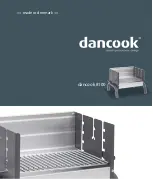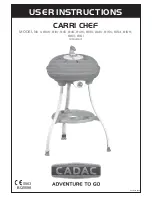
13
OPERATING INSTRUCTIONS
MASONRY DRILLING
1. For maximum performance, use carbide-tipped masonry bits when drilling holes in brick, tile,
concrete, etc.
2. Maintain a speed and pressure which will allow cutting without overheating the bit or drill/driver.
Applying too much pressure will:
- Overheat the drill/driver.
- Wear the bearings.
- Bend or burn bits.
- Produce off-center or irregular-shaped holes.
3. Apply light pressure and medium speed for best results in brick.
4. Apply additional pressure for hard materials, such as concrete.
5. When drilling holes in tile, practice on a scrap piece to determine the best speed and pressure.
6. Begin drilling at a very low speed to prevent the bit from slipping off the starting point.
SCREW DRIVING (Fig. 16)
Try to use modern screws for easy driving and improved
grip.
1. Install the correct driver bit.
2. Ensure that the torque-setting ring is set to the most
suitable setting. If in doubt, start with a low setting and
gradually increase the setting until the most suitable
position is found. Do not change the torque setting
when the tool is running.
@ $ "
pressure to the trigger initially. Increase the speed only
when full control can be maintained.
[ ^ z
% "
shank diameter of the screw. The pilot hole will act as
a guide for the screw and will also make tightening the
% { %
to an edge of the material, a pilot hole will also help to
prevent splitting of the wood.
5. Use a countersinking bit (available separately) to accommodate the screw head, so that it does
not protrude from the surface.
| ^ % %
pilot hole, but remember that there must be enough remaining material for the screw to grip! If
% ! % ^ %
(as when using very hard woods) try using a lubricant such as soap; liquid soap is usually best.
j % %
!
16














































